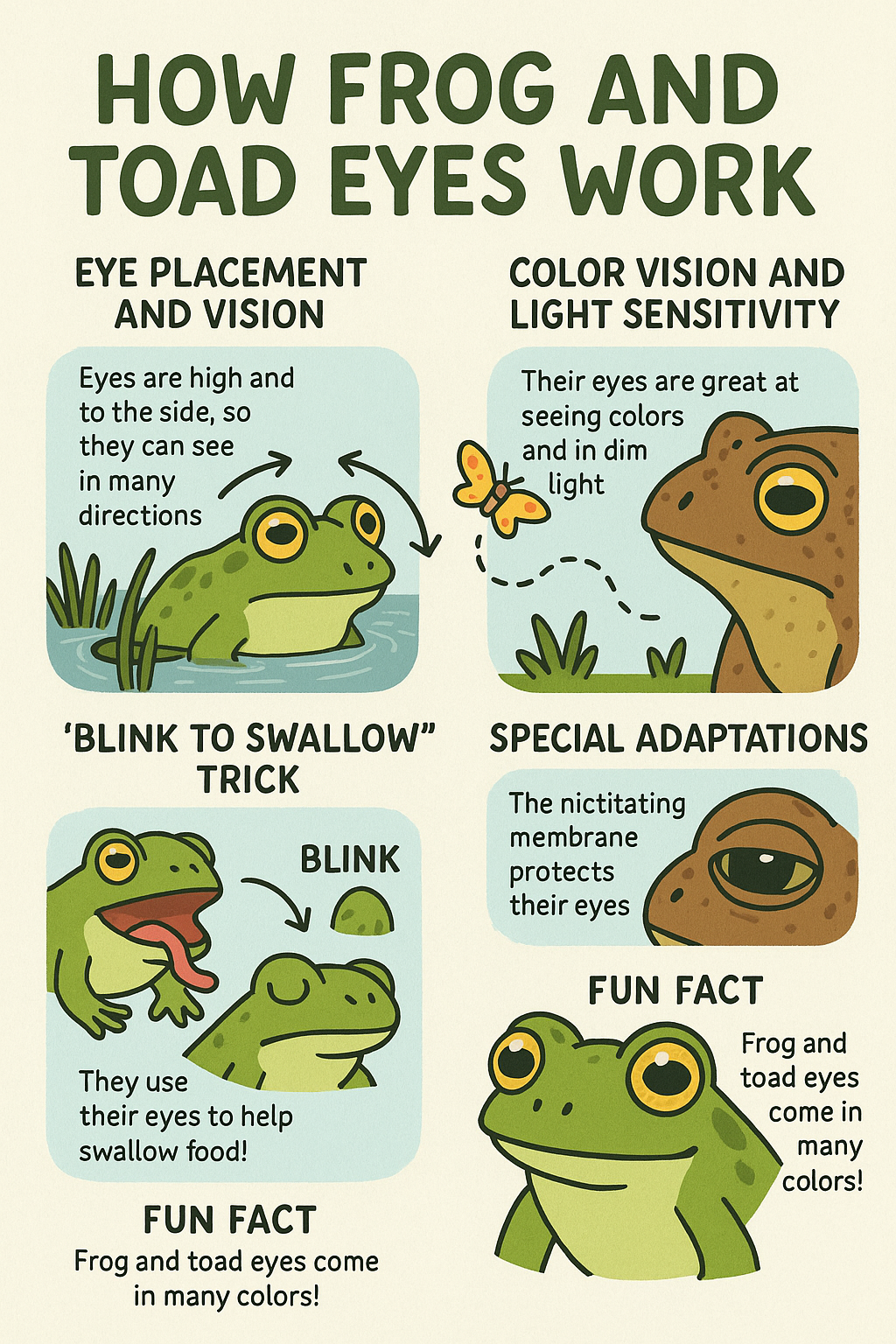Frog and toad eyes are truly amazing
they’re built for both survival and precision! Here’s how they work:
👁️ Eye Placement and Vision
Frogs and toads have large, bulging eyes positioned on top of their heads.
This allows them to see in almost every direction—forward, sideways, and partially behind—without moving their heads.
The high placement also means they can keep their eyes above the water’s surface while the rest of their body stays hidden below.
🌈 Color Vision and Light Sensitivity
Frogs and toads have excellent night vision.
Their eyes contain rod cells for low-light sensitivity and cone cells for color detection.
They can see colors even in dim light—something humans can’t do!
This helps them hunt insects and detect predators at dusk or night.
🔄 “Blink to Swallow” Trick
Here’s one of their coolest features: frogs and toads use their eyes to help swallow food!
When they blink, their eyes push down into the mouth cavity, helping to push food toward the throat.
So, each blink isn’t just for moisture—it’s part of how they eat!
🕶️ Special Adaptations
Nictitating membrane: a clear third eyelid that slides over the eye for protection and moisture while still allowing them to see—especially underwater.
Horizontal pupils (in most toads) help them see a wide horizon on land, while vertical pupils (in many tree frogs) give better depth perception in low light.
🐸 Fun Fact
The colors of frog and toad eyes vary widely—gold, bronze, red, green, even blue—and often help with camouflage or communication during mating seasons.

